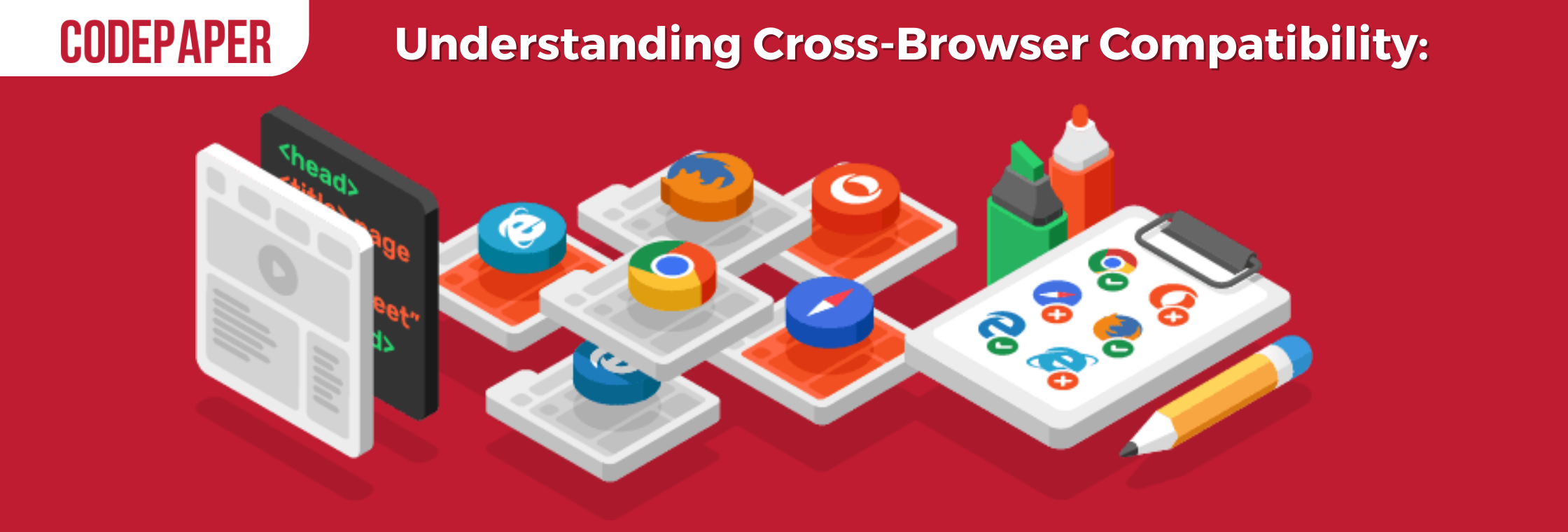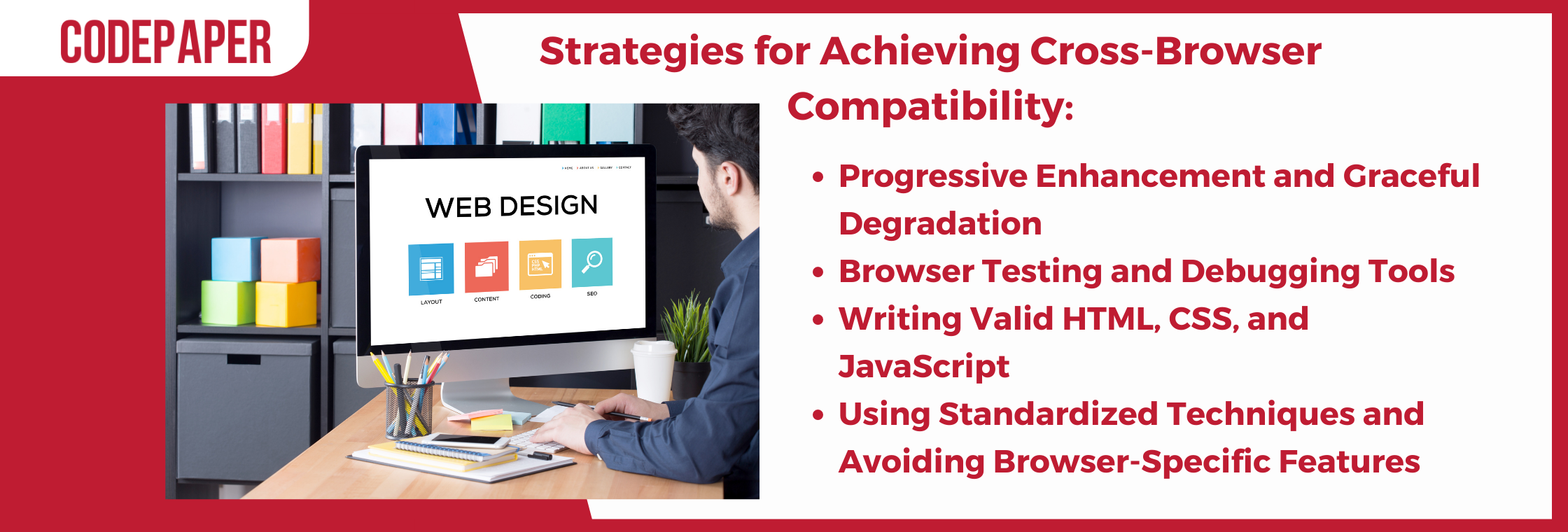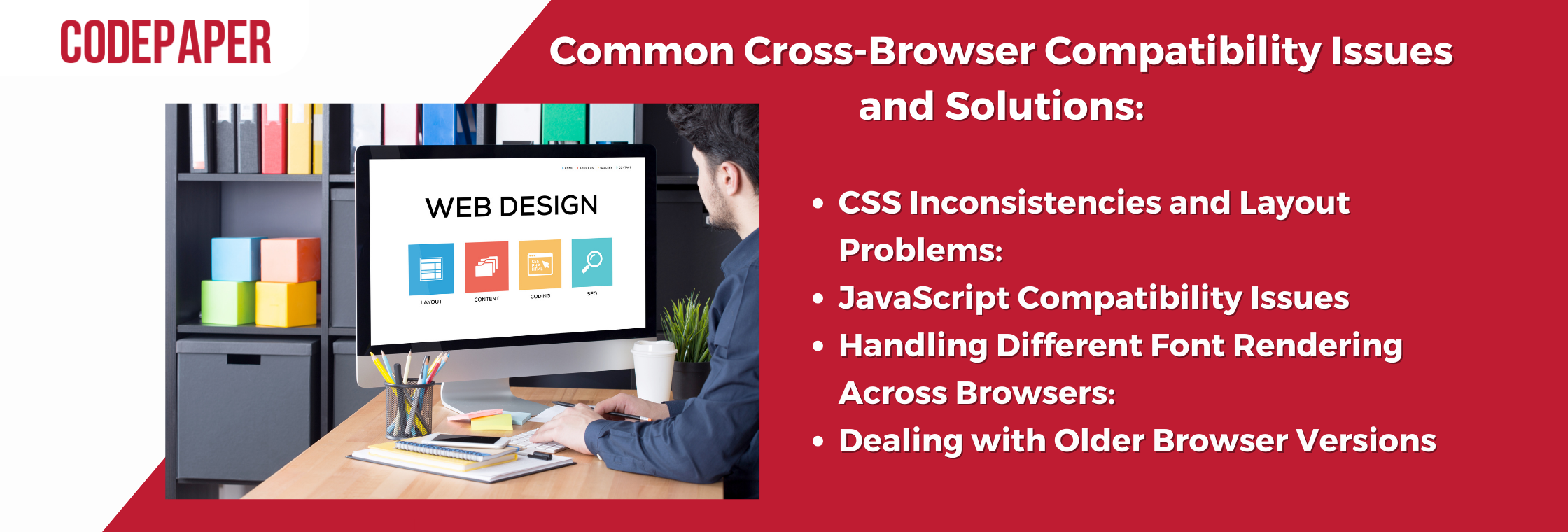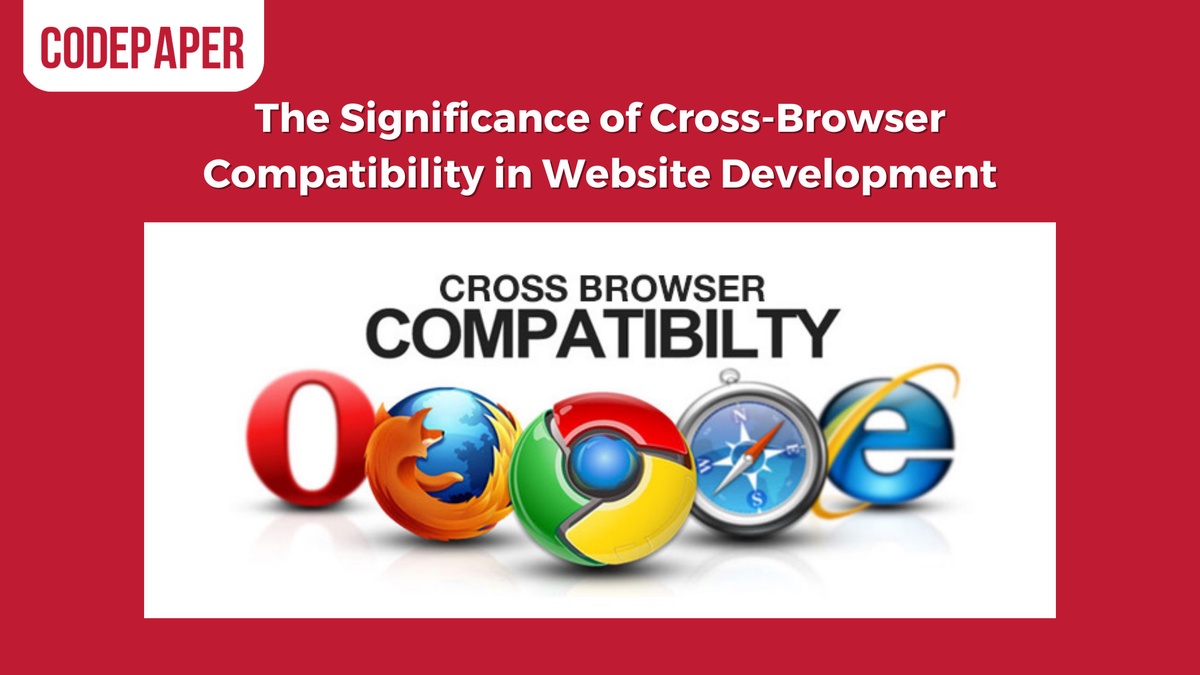In today's digital age, where a multitude of web browsers are used by internet users worldwide, ensuring cross-browser compatibility has become a crucial aspect of website development. In this blog post, we will explore the significance of cross-browser compatibility and why it should be a priority for web developers.
Understanding Cross-Browser Compatibility:

To begin, let's define cross-browser compatibility as the ability of a website, developed by a web design company, to function and appear consistently across different web browsers and their various versions. With popular browsers such as Google Chrome, Mozilla Firefox, Safari, and Microsoft Edge, each having its own rendering engine and compatibility standards, developing a website that works seamlessly on all platforms can be challenging.
Benefits of Cross-Browser Compatibility:

Cross-browser compatibility offers numerous benefits to website owners and end-users alike.
Enhanced User Experience:
Consistent Website Appearance and Functionality: Cross-browser compatibility and robust website security ensures that your website looks and behaves the same across different browsers. Users will have a consistent experience regardless of the browser they choose, promoting a positive and professional impression. Seamless Navigation Across Browsers: With cross-browser compatibility and strong website security measures in place, users can effortlessly navigate through your website, accessing its features and content without encountering any unexpected glitches or errors.
Expanded Reach and Accessibility:
Reaching a Wider Audience: Each browser has its own user base, and by ensuring cross-browser compatibility, you can effectively engage with a broader audience. Your website will be accessible to users who prefer different browsers, enabling you to maximize your reach. Ensuring Website Accessibility: Cross-browser compatibility plays a crucial role in website accessibility for individuals with disabilities. By making your website compatible with assistive technologies and browser-specific accessibility features, you ensure an inclusive online experience for all users.
Improved Search Engine Optimization (SEO):
Positive Impact on Search Rankings: Search engines favor websites that are compatible with different browsers and devices. Cross-browser compatibility helps enhance your website's visibility and rankings in search engine results pages, boosting your overall SEO efforts. Better Visibility Across Browsers and Devices: By ensuring cross-browser compatibility, your website will be accessible and readable across various devices, including desktops, laptops, tablets, and smartphones. This adaptability enhances user experience and allows your website to cater to the preferences of different users.
Factors Affecting Cross-Browser Compatibility:

- Different browsers use distinct rendering engines, such as Blink (Chrome), Gecko (Firefox), WebKit (Safari), and Trident (Internet Explorer). These engines interpret and display web content differently, leading to compatibility issues.
- HTML, CSS, and JavaScript Standards: Varying browser versions may support different HTML, CSS, and JavaScript standards. Failure to adhere to these standards can result in rendering inconsistencies and functionality errors.
- Browser-Specific Quirks and Inconsistencies: Browsers may have their own unique quirks, non-standard features, or interpretations of standards. Developers must be aware of these differences and find workarounds to ensure cross-browser compatibility.
Strategies for Achieving Cross-Browser Compatibility:

To overcome cross-browser compatibility challenges, developers can employ the following strategies:
- Progressive Enhancement and Graceful Degradation: By progressively enhancing a website's features and functionality while ensuring it degrades gracefully on less-capable browsers, developers can strike a balance between modern capabilities and broad compatibility.
- Browser Testing and Debugging Tools: Thoroughly testing a website on different browsers and utilizing debugging tools can help identify and resolve compatibility issues early in the development process.
- Writing Valid HTML, CSS, and JavaScript: Following standardized coding practicesand ensuring clean and valid code helps minimize compatibility issues.
- Using Standardized Techniques and Avoiding Browser-Specific Features: Relying on standardized techniques and avoiding browser-specific features or vendor prefixes reduces the chances of encountering compatibility problems.
Common Cross-Browser Compatibility Issues and Solutions:

While striving for cross-browser compatibility, developers often encounter specific challenges. Here are some common issues and their solutions:
- CSS Inconsistencies and Layout Problems: Different browsers may interpret CSS rules differently, resulting in layout inconsistencies. Using CSS reset or normalization techniques, employing CSS frameworks, and conducting thorough testing can help mitigate these issues.
- JavaScript Compatibility Issues: Browser variations in JavaScript interpretation can lead to functionality errors. Adopting JavaScript libraries or frameworks that handle cross-browser compatibility, using feature detection instead of browser detection, and testing across multiple browsers are effective solutions.
- Handling Different Font Rendering Across Browsers: Fonts may appear differently across browsers due to variations in font rendering engines. Utilizing web-safe fonts, embedding custom fonts using web font services, and testing font rendering on multiple browsers can address this issue.
- Dealing with Older Browser Versions: Supporting older browser versions can be challenging due to limited support for modern web technologies. Implementing graceful degradation techniques, providing fallbacks for unsupported features, and educating users on the benefits of upgrading their browsers can help mitigate these challenges.
Testing and Debugging for Cross-Browser Compatibility:

Thorough testing and effective debugging are essential for achieving cross-browser compatibility. Consider the following approaches:
Overview of Browser Testing Methods:
Manual Testing Across Different Browsers and Devices: Regularly test your website on popular browsers, both on desktop and mobile devices, to identify and address compatibility issues.
Automated Testing Tools and Services: Utilize automated testing tools and services that simulate various browser environments to streamline the testing process and uncover compatibility problems.
Common Debugging Techniques:
Using Browser Developer Tools: Take advantage of browser-specific developer tools to inspect elements, debug JavaScript, and identify compatibility issues.
Cross-Browser Debugging Tips: Use feature detection rather than browser detection, log errors and warnings in the console, and leverage online resources and forums for troubleshooting common compatibility issues.
Conclusion:
Cross-browser compatibility is paramount in website development. By prioritizing compatibility, developers can ensure a consistent user experience, expand their reach, improve website rankings, and cater to the needs of diverse user groups. Embracing strategies, adhering to coding best practices, and investing in thorough testing and debugging will help achieve cross-browser compatibility and create exceptional web experiences.
As the digital landscape evolves, maintaining cross-browser compatibility will remain a crucial consideration for web developers. By embracing compatibility as a core principle, we can build websites that provide seamless experiences across browsers and devices, fostering inclusivity, engagement, and success in the online world. For more information, visit our website.


No comments yet